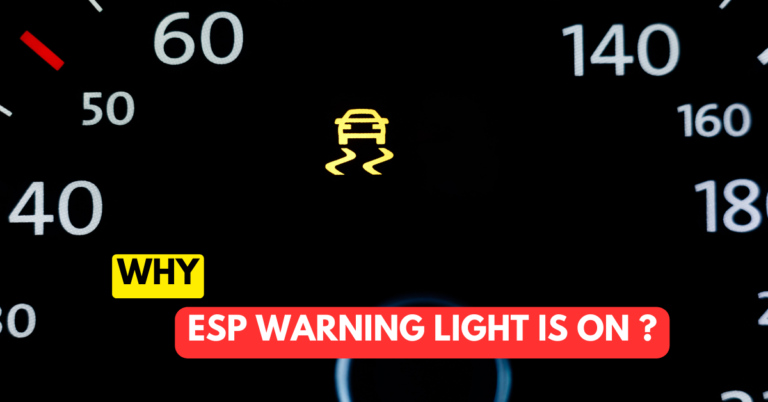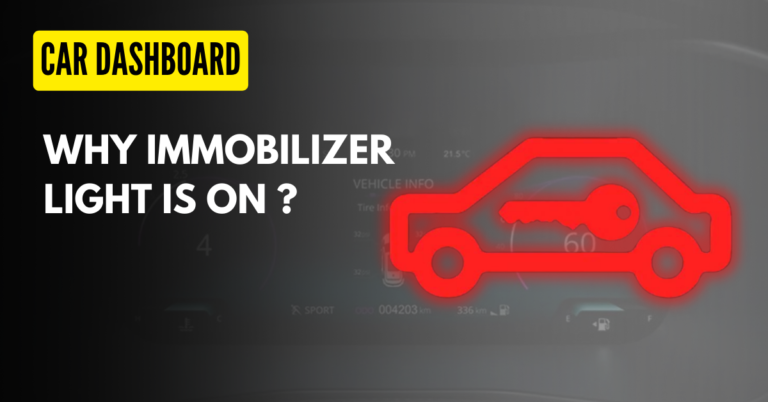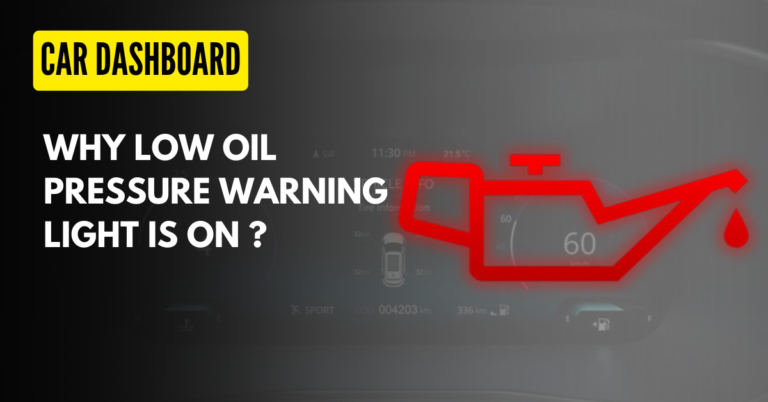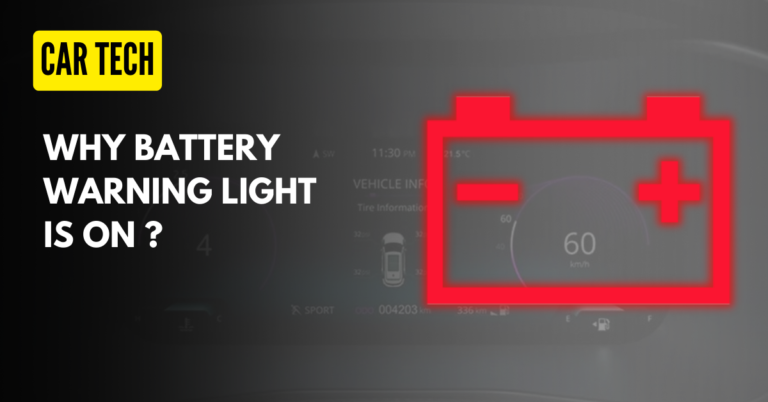When the ABS (Anti-lock Braking System) warning light appears while driving, it’s a signal of a malfunction within the ABS system. Despite the warning light being on, your vehicle’s braking system will still function, but without the assistance of the anti-lock braking feature. This means the wheels could potentially lock up during hard braking, affecting their ability to steer. It’s important to address this issue promptly for safer driving.
What is ABS and warning Light for?
The ABS (Anti-lock Braking System) is designed to prevent the wheels from locking up during heavy braking or emergency situations. When you apply excessive brake pressure, particularly in emergencies, it could cause the wheels to lock. This can result in a loss of control, leading to skidding or potential accidents.
ABS doesn’t enhance the car’s braking performance or make it stop more quickly. Instead, it’s an automated system that aids in controlling braking during emergencies. It allows for better maneuverability, reducing the risk of skidding and helping the driver steer clear of collisions.
The ABS warning light on the dashboard typically signals an issue with the ABS system, cautioning the driver to exercise care and not solely rely on ABS while driving.
Why ABS Warning Light Stays ON?
The ABS (Anti-lock Braking System) light undergoes a self-check process upon starting your vehicle. It should briefly illuminate and then turn off, indicating the system is operational.
However, if the light remains lit after this check or if it comes on while driving, it suggests a malfunction in the ABS system. This could be due to various component failures such as sensors, control modules, or the control valve. It’s important to have the ABS system inspected when this warning light stays illuminated.
Is it safe to drive a car with ABS light on?
In most cases, if the ABS light is the only warning light illuminated without any other brake warning lights, it’s generally safe to drive the vehicle. However, it’s important to exercise caution and adapt your driving style as the ABS system might be non-functional. Avoid abrupt or hard braking that could potentially lead to wheel lock-up and loss of control.
If the ABS light is accompanied by another brake warning light, it’s not recommended to drive the vehicle as this could indicate a more severe brake system issue, possibly resulting in compromised braking capabilities.
What Causes the ABS Warning light to come on?
The ABS warning light in a car can be triggered by various factors:
1. Faulty Wheel Speed Sensor:
The wheel speed sensors in each wheel measure their individual movement rates. If any sensor detects that a wheel is moving slower than it should or if it locks up, the ABS system intervenes by adjusting brake fluid pressure.
This action aims to restore the normal speed of the wheel and prevent it from locking up entirely. However, if any of these speed sensors malfunction, it can trigger the ABS warning light to illuminate on the dashboard.
2. Unresponsive Hydraulic Pump or Valve (Bad ABS Pump):
The ABS system uses a hydraulic valve to modulate brake fluid pressure and prevent wheel slippage. Damage to this valve or pump, often due to dirt or brake fluid contamination, can cause the ABS light to come on.
3. Faulty ABS Module:
Corrosion on the module’s wires can increase resistance, leading to communication delays or failure between the wheel speed sensors and the ABS module. Even minor corrosion can disrupt the system, sometimes necessitating module replacement.
4. Blown Fuse:
Like most electrical components, the ABS system has its own fuse. A blown or burnt fuse dedicated to the ABS can cause the warning light to illuminate. Checking and replacing a blown fuse can be a simple solution.
5. Low Brake Fluid:
The ABS system relies on hydraulic brake fluid to regulate pressure. Insufficient fluid levels in the reservoir can prevent the ABS from functioning correctly, causing the ABS light to stay on. Excessive air in the system can also contribute to this issue.
6. Damage to a tone wheel on an axle:
A tone wheel, a sensor ring integral to the wheel speed sensor, aids in measuring the wheel’s speed by counting the intervals between its notches. This component is part of the anti-lock brake system.
If the tone wheel deteriorates over time, the sensor may fail to produce a functional signal. As a result, this can trigger the activation of your ABS warning light.
7. Loose or worn wheel bearings or hubs:
Loose or worn wheel bearings or hubs can create excessive play in the wheel, affecting the proper positioning of the sensor to read the tone wheel. This misalignment can interfere with the sensor’s ability to accurately measure the wheel’s speed, potentially triggering the ABS warning light.
How to Fix ABS Warning Light?
Here are steps you can take to fix issue the ABS warning light :
1. Test the ABS Wheel Sensor:
A faulty wheel speed sensor could trigger the ABS light. Use a multimeter to measure the sensor’s resistance, comparing it to the manufacturer’s specifications. If it fails the test, consider replacing it. Before replacing, inspect the sensor terminals for any corrosion. Corrosion can disrupt connections; if found, clean the terminals and retest.
2. Check Hydraulic Pump or Valve:
Check for leaks around the gasket and tubing. If there’s leakage, replace the gasket or tighten connections to prevent further leakage.
Debris in the brake fluid might cause blockages in the hydraulic valve. Attempt to flush the hydraulic valve to clear any blockage. If this doesn’t resolve the issue, replacement might be necessary.
3. Inspect the ABS Fuse:
A blown fuse could be behind the ABS warning light. Locate the ABS fuse within your vehicle’s fuse box and check for any signs of damage or being blown. If the fuse is blown, replace it with a new one of the same amperage.
However, remember that a blown fuse could signify an underlying issue requiring further attention.
4. Check Brake Fluid Level:
Low brake fluid levels could trigger the ABS warning light. Verify the brake fluid level in the reservoir and refill it if it’s low.
If you’ve recently topped up the brake fluid, air might have trapped in the brake fluid lines. In such cases, consider bleeding the brakes to remove any air bubbles from the system.
5. Inspect the tone wheel on an axle:
Rotate the wheel slowly and examine the ring for any gaps or excessive corrosion.
6. Inspecting wheel bearings or hubs for play:
Check or measure for excessive movement in the wheels that could affect the sensor’s proper positioning to read the tone wheel.
7. Ignition key ON/OFF:
Try turning the ignition key off and then back on as a simple initial troubleshooting step, similar to power cycling a computer.
8. Try Resetting the ABS Warning Light:
To reset the ABS warning light, start by disconnecting the positive cable from your car’s battery. Then, activate the headlight switch to drain any residual power remaining in the electrical system. This method might help reset the ABS warning light.
9. Try Resetting the ABS Warning Light:
If all other attempts fail to resolve the issue, consider replacing the ABS module itself. Issues within the ABS module can trigger the warning light, and replacing it might resolve the problem.




